Should You Let Your Pets Sleep In Your Bed? Here’s What Experts Say

Many pet owners face the nightly dilemma of whether to invite their furry companions into bed. This seemingly simple decision can impact both your sleep quality and your relationship with your pet.
Experts in veterinary medicine and animal behavior have weighed in on this common question, offering insights that might help you decide what’s best for your household.
1. Many Pets Seek Comfort And Security
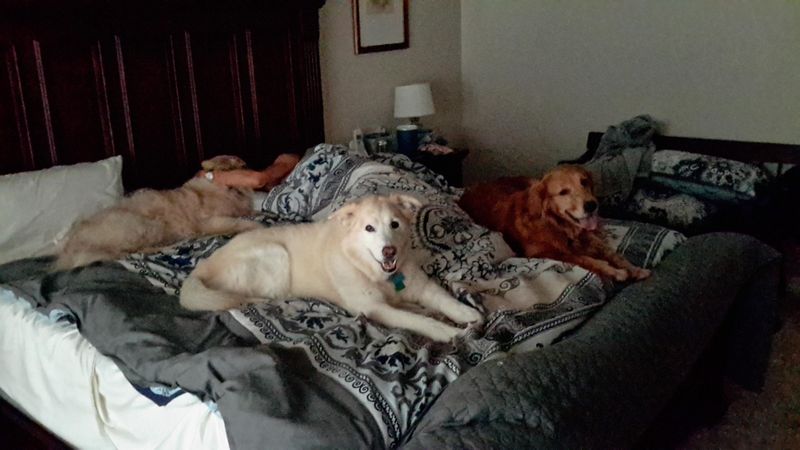
Your bed represents a safe haven for your four-legged friend. Animals instinctively seek warm, protected spaces that remind them of den or pack sleeping arrangements.
This natural behavior explains why your cat or dog gravitates toward your pillow or curls against your legs. For many pets, your scent and presence provide reassurance that predators won’t approach during vulnerable sleeping hours.
2. Your Pet Might Already Be Influencing Your Sleep

Those tiny movements your pet makes throughout the night aren’t as innocent as they seem. Research reveals that pet owners experience more sleep disturbances than those who sleep solo.
Even when you don’t fully wake up, your sleep cycles shift when your furry friend adjusts position, stretches, or dreams. These micro-disruptions can leave you feeling mysteriously tired despite what seemed like a full night’s rest.
3. Allergies Can Be Triggered Or Worsened
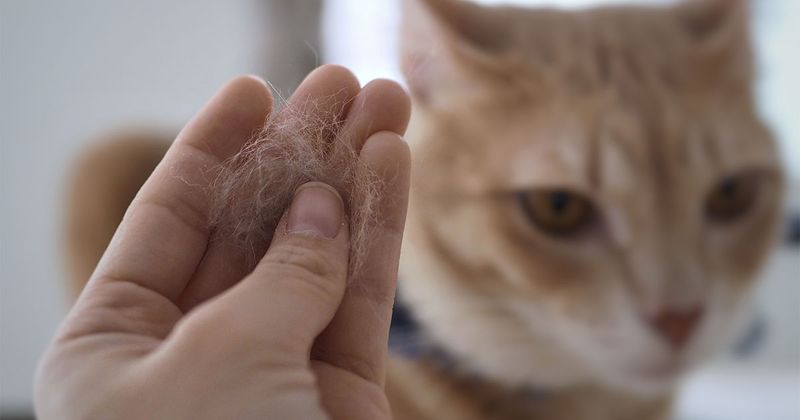
Your seemingly innocent snuggle buddy might be causing those morning sniffles. Pet dander settles into bedding fibers and mattresses at alarming rates, creating an allergen hotspot right where you spend eight hours breathing deeply.
Allergy sufferers often report symptom improvement when pets are banned from the bedroom. Even if you’ve never had pet allergies before, prolonged exposure in close quarters can sometimes develop sensitivities over time.
4. The Bond Between Owner And Pet May Deepen
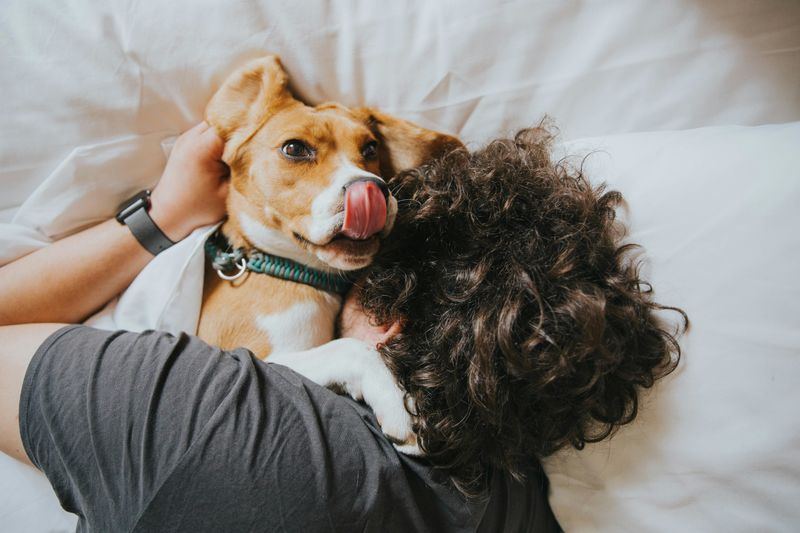
Sharing your sleeping space creates unique opportunities for connection. The vulnerability of sleep promotes mutual trust between you and your animal companion. Many pet behaviorists note that dogs especially interpret bed-sharing as acceptance into your inner circle.
This nighttime ritual often translates to stronger daytime responsiveness and attentiveness. For rescue animals with trust issues, controlled bed access can sometimes accelerate the bonding process.
5. Cats Might Disrupt Your Sleep More Than Dogs
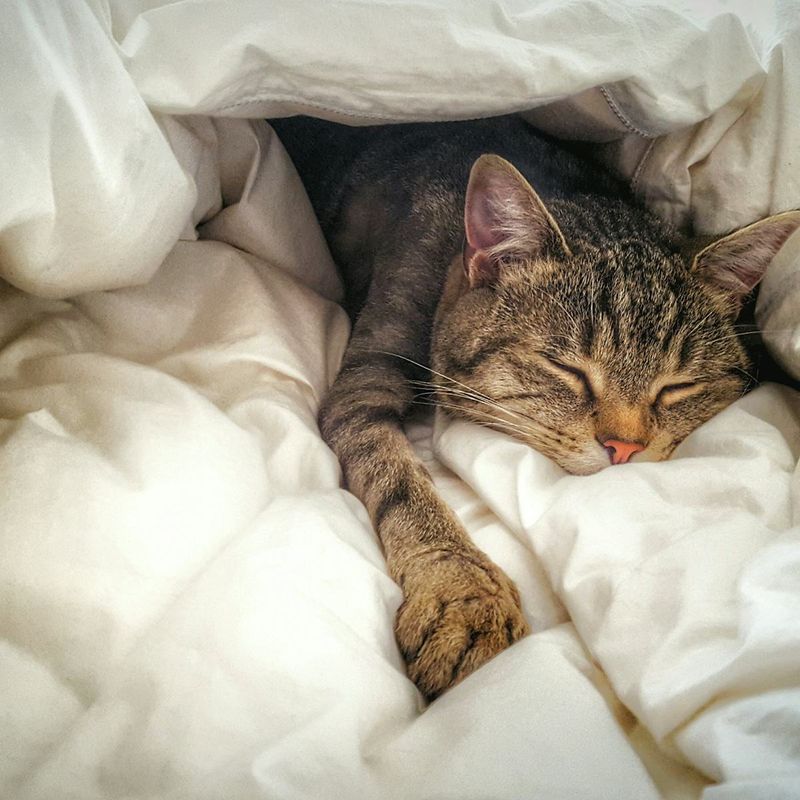
Your feline friend operates on a fundamentally different schedule than you do. Cats experience bursts of energy during twilight and pre-dawn hours, precisely when you’re trying to reach deep sleep stages. Unlike dogs who generally adapt to human schedules, cats maintain their crepuscular instincts regardless of your routine. Those adorable midnight zoomies or 4 AM face pats aren’t random behaviors—they’re hardwired into your cat’s biological clock.
6. You Might Be Reinforcing Behavioral Expectations
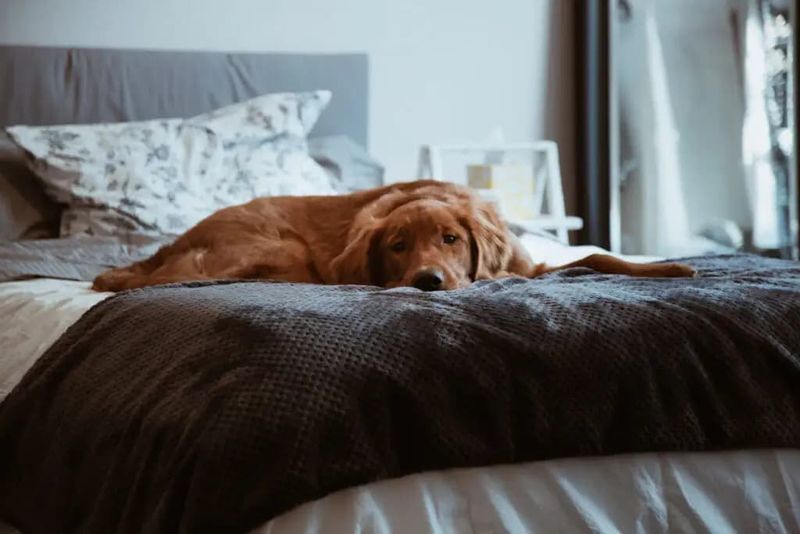
Once your pet enjoys the privilege of sharing your bed, changing the rules becomes increasingly difficult. Animals thrive on consistency and quickly form expectations about sleeping arrangements. Veterinary behaviorists warn that suddenly revoking bed access can trigger anxiety or protest behaviors.
This becomes especially relevant during major life changes like new relationships or pregnancies when sleeping arrangements might need adjustment. Planning ahead saves everyone stress.
7. Temperature Regulation Is A Real Consideration
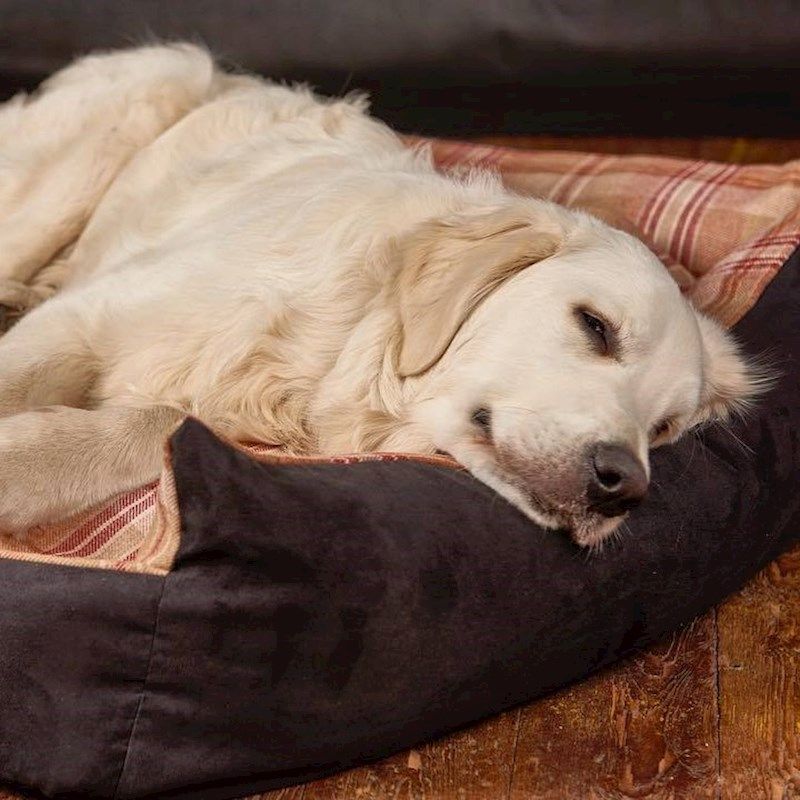
Your furry companion essentially functions as a living hot water bottle. Most pets maintain body temperatures several degrees higher than humans, which transfers directly to your sleeping environment. During winter months, this natural warmth might be welcome.
However, summer sleeping can become uncomfortable when additional heat sources join you under the covers. Some pets also disturb blankets or shift positions frequently, affecting your ability to maintain comfortable sleeping temperatures.
8. Size And Sleep Style Matter

A Yorkshire Terrier curled at your feet creates vastly different sleeping dynamics than a sprawling Great Dane. Breed characteristics significantly impact bed-sharing success. Some pets naturally sleep still while others twist, turn, and readjust constantly.
Your own sleep position preferences matter too. Side sleepers generally accommodate pets better than those who need to spread out. Practical space considerations should influence your decision, especially for couples sharing queen beds.
9. Your Pet’s Health Could Be A Factor
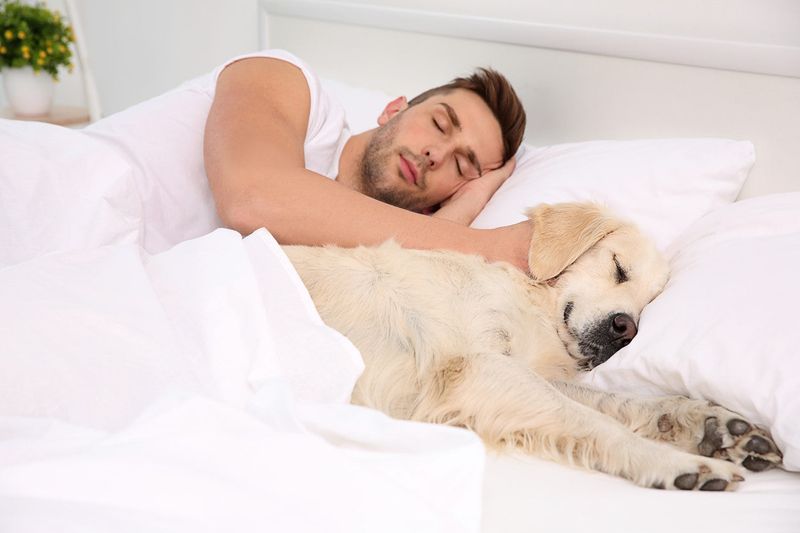
Animals with certain medical conditions benefit from close overnight monitoring. Diabetic pets, those with seizure disorders, or seniors with declining health might genuinely need your proximity.
Conversely, pets with respiratory issues can sometimes breathe better on firm surfaces rather than sinking into mattresses. Animals recovering from surgery risk reopening wounds when jumping on and off beds. Your veterinarian can provide specific guidance based on your pet’s individual health profile.
10. Sleep Hygiene Can Be A Concern
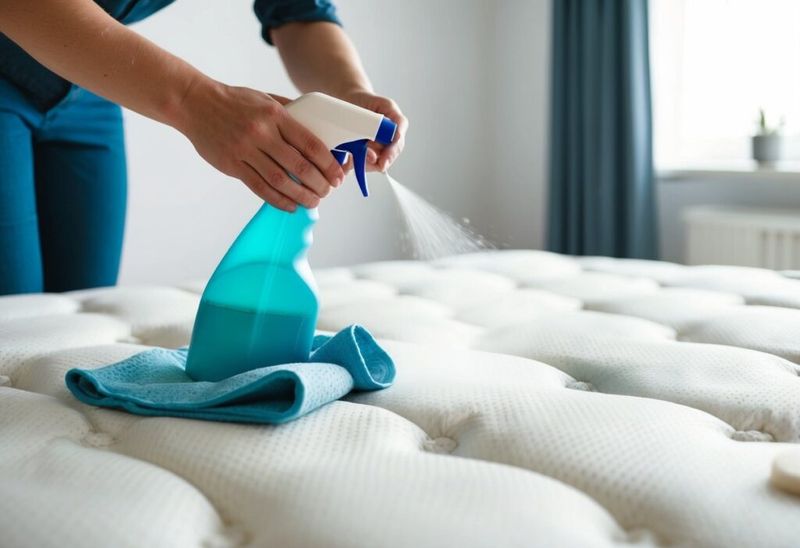
Even the cleanest pets track microscopic particles into your sleeping sanctuary. Outdoor cats and dogs bring environmental allergens, bacteria, and occasionally parasites directly onto your sheets. Regular bathing helps but doesn’t eliminate all concerns.
Practical pet owners often implement systems like dedicated pet blankets or more frequent laundering schedules. Some find that washable mattress covers and pillow protectors provide peace of mind while still allowing pet access.
11. Children And Pets Sharing Beds Requires Extra Thought
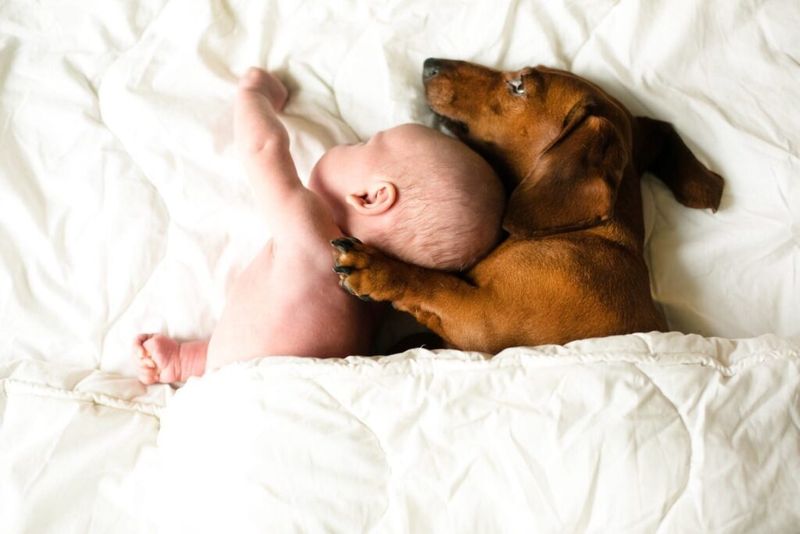
Young children lack the awareness and strength to safely navigate nighttime interactions with pets. Animal behaviorists recommend waiting until kids reach school age before allowing shared sleeping arrangements. Even gentle pets can react defensively if startled from sleep or accidentally hurt.
Responsible households establish clear rules about which pets can sleep with which family members. The benefits of comfort and companionship must always be balanced against safety considerations.
12. There’s No One-Size-Fits-All Answer
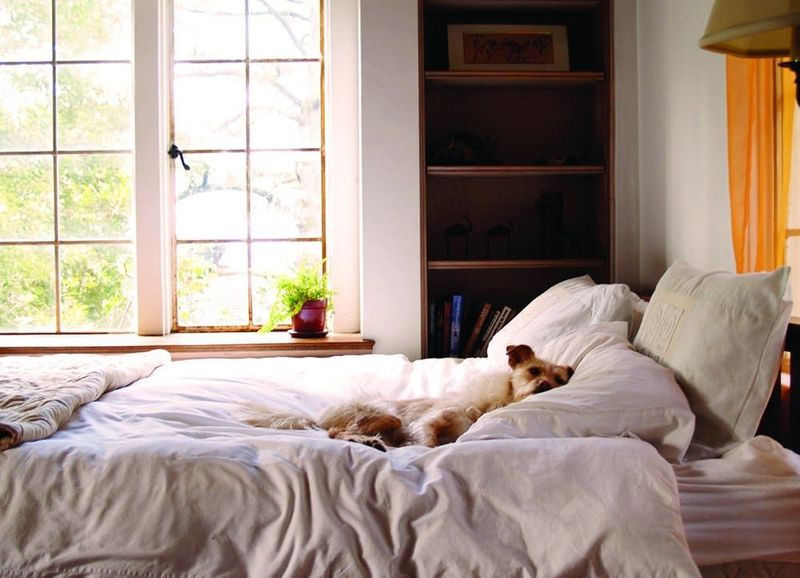
Animal experts unanimously agree that bed-sharing decisions should reflect your unique household dynamics. Factors like your sleep quality, work schedule, relationship status, and living space all influence what arrangement works best.
Some owners sleep soundly with multiple pets while others find even one small cat disruptive. The healthiest approach involves honest assessment of everyone’s needs—human and animal. Remember that quality sleep remains essential for both your health and your ability to care for your pets.






